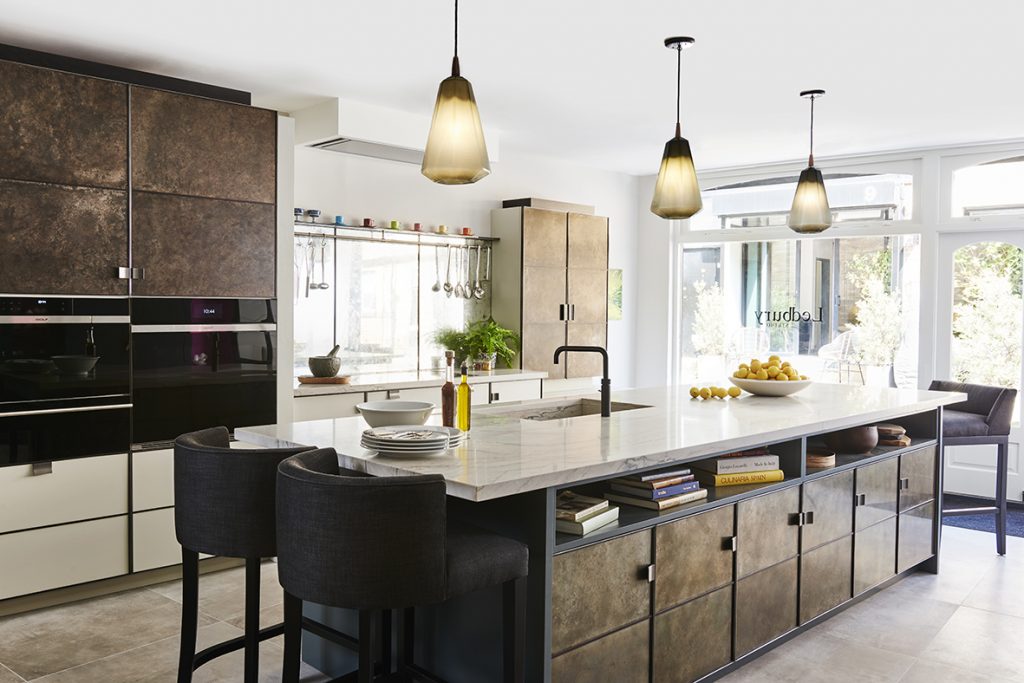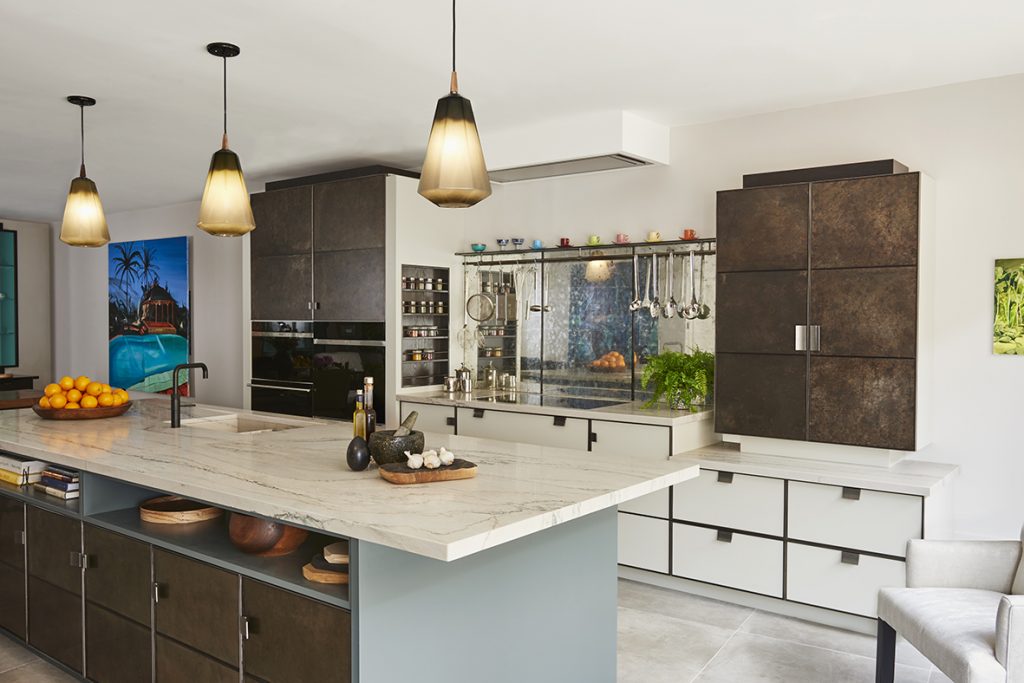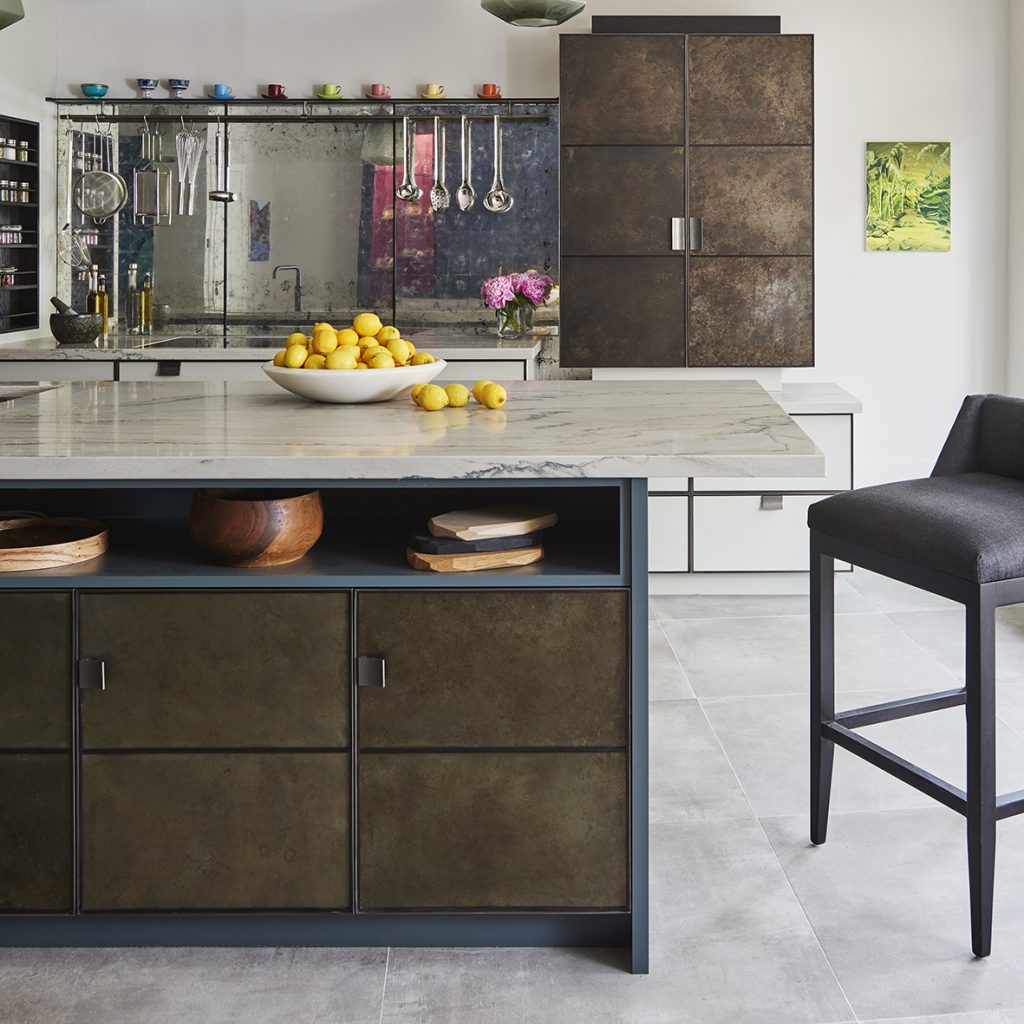Kitchen design icon Charlie Smallbone is back with a new business, new showroom and newly invigorated passion for creativity and craftsmanship. It has, he tells Andrew Davies, been a long journey to come back to his roots…
Back in 1981, as the first signs of the gentrification of Notting Hill began, a small shop in Needham Road tentatively opened its door to sell kitchens. This first Smallbone of Devizes showroom spawned not just a premium retail brand, but also a style of kitchen that would shape and influence the English-style look to this day.
As Charlie Smallbone opens the door to his new showroom 38 years later, the feeling of coming full circle is palpable. Ledbury Studio is named after Ledbury Mews, the archetypal side street that’s just 350 yards from Needham Road. It is, he says with a grin on his face, “serendipitous”.
Smallbone, now 66, still has a hint of laid-back rock-and-roll about him. He carries the look of someone who was once in a really successful multi-platinum stadium-filling band but is now making personal solo albums and is all the happier for it. He is, as he describes it several times, going back to his roots simply because he enjoys it.

It’s not hard to see why he would seek contentment in this way. The forced sale of Smallbone of Devizes to Canburg in 2009 marked one of the first industry casualties of the global downturn. It was, by his own admission, “a massively traumatic period in my life”.
In contrast, Ledbury Studio is deliberately very modest in its approach. At just 900sq ft, it is a single room housing one full kitchen display, but it isn’t modest in its aspirations – that kitchen is quite a thing to behold.
Now called the Metallics Collection, it started out life as ‘Elemental’ – a collaboration between DeVol and Smallbone displayed at the Chelsea Flower Show in 2018. The enjoyment of creating something just for the hell of it was the inspiration he needed to return to the market with a new focus and reignited passion for kitchen design. “I was very keen,” he says without a hint of false modesty, “to recreate some credentials as a designer…”
While looking to the future with his designs, Smallbone is happy to embrace the tangible providence in coming back to Notting Hill.
“Oh, yes, it’s definitely a full circle,” he says. ”It’s so close to our original showroom and, in that respect, there is obvious serendipity.
“It definitely helped influence the choice, but it still needed to work practically, as at that stage we were still a blank sheet of paper as a commercial enterprise. You can’t just show up on the perfect high street, because that’s going to be a quarter-of-a-million quid a year and you don’t want that.”
The location in the mews means Ledbury Studio is not set up to attract passing footfall. As attractive as the row of former stables is, you have to know it’s there to find it.
“It’s a discovery, yes,” Smallbone agrees. “But that’s another way it feels like a full circle – it was exactly the same in Needham Road. It was a discovery then and nobody knew who we were. London was a different city and this area wasn’t even up-and-coming, but we built a reputation and people found us.”
The Chelsea Flower Show kitchen with DeVol was the catalyst that led to this point – a business venture spinning out of the freedom of a conceptual design project. Smallbone describes the process as ‘organic’, but it did come along at a time when he had design ideas ticking over in his mind. 
“I always had an idea about trying to push furniture back into the kitchen and doing a modern-day take on a less fitted environment. I wanted to do something that we could repeat, but with enough variability within the design concept to make some real changes for each project.
“I’d also, as it happens, been looking at more contemporary ideas with quite complex fascia finishes, and stuff that didn’t necessarily have frames. I think by then I was starting to realise that there was real flexibility and opportunity within the design that we were creating.”
The original signature ‘Smallbone’ look is very definitive, so when creating a new product, was there a conscious ‘anti-Smallbone’ approach?
“It’s more of a beyond-Smallbone thing rather than an anti-Smallbone thing,” he says. “It’s been that long now that it’s actually not really relevant to me in that respect.
“If it was an anti-anything, it was an anti-everything. But that’s where I’ve always come from – shaking things up from the norm is what we did in the 1970s, too.”
This approach follows through into the name, too. Smallbone has consciously rejected the easy, and most obvious, option of putting his name over the door and creating a business built around recognition and reputation.
“Getting older and more experienced means you see what you don’t want to do as much as what still interests you,” he says. “We’re hugely keen to build a new brand and not really keen to revisit an old brand. Plus, we also know there are an awful lot of things that we did back in the day that are still being perpetuated by others, so it’s not where we want to be.
“What we saw was the opportunity to build a new brand and you need a showroom for that. You have to define a look that people will say ‘ah, that’s Ledbury Studio’.”
As a result, the kitchen design this business is built on has all the elements of experience, but also demonstrates that the point of view of Smallbone the person is as relevant now as ever, and boundaries are still there to be pushed.
“It’s about enthusiasm and passion,” he says. “You’ve got to want to do it. If somebody like me comes back to the industry – although I’m not really sure how much I ever went away – there’s no real interest in doing what I’ve done before. It’s also a totally different dynamic now, because it’s become such a big industry and so many people owe their living to it.”
Does that size stifle design and creativity?
“My own view, probably slightly controversially, is that it’s going a bit too overly commercial at the moment. That’s almost overridden forward-thinking and conceptualisation from a design standpoint. I don’t see a lot of ‘new’ happening out there, but the health of the market probably affects that. After 10 years of austerity, a lot of people have gone out of business and people cut back on forward spending.”
While the collaboration with DeVol triggered the Ledbury Studio, the kitchens are made in partnership with McCarron and Co – a move also designed to relieve Smallbone from the pressures of manufacturing and leave him free to design.
“Back in the day, we always felt we created an absolute monster in the factory in Devizes that always had to be fed and I didn’t want to have that situation again,” he says.
“Equally, I didn’t want to just have a third-party relationship with somebody where we could drop down the list of their priorities. So now we’ve got a very close relationship with McCarron and Co, where they have actually invested in the enterprise. With Ledbury, we want to do tens of kitchens rather than hundreds. We want a niche business that can offer people artisan craft and give them something that’s been beautifully executed by somebody who really cares.”
Devizes

Charlie Smallbone ended his association with the Smallbone of Devizes company that bears his name back in 2009. It was a decade ago, but does he still have an emotional reaction when he reads about the turmoil it has recently been through under Canburg before its subsequent sale to SMWF Ltd?
“It’s a shame, but I actually feel fairly dispassionate about it,” he says. “I feel really sorry for the people involved, of course, and obviously it has my name – and the fact that we founded it never goes away. But it’s been a long time since I was involved with it, so I don’t have a particular problem about it.”
The company was founded in 1976 with partner Graham Clark and they always had clear ambitions for growth. They floated it on the stock exchange in 1986 and in 1988 lucratively sold it to Williams Holdings – then owner of Crown Paints, among other brands.
“It was a quite turbulent time in 1988,” Smallbone explains. “We’d been humongously successful up to that point, but I think we were beginning to feel the pressures of being in a PLC and the economy was on a downturn. Williams was very acquisitive at that time and they came along with the cash.”
Smallbone went off to the US and successfully bought into high-end tiles and flooring business Paris Ceramics.
Smallbone of Devizes, meanwhile, suffered under Williams and was subsequently sold to Gower in 1996.
In 2003, the opportunity came up for Charlie Smallbone to buy the company back at a fraction of the price he’d sold it for. He refloated it a year later and used the cash to buy Mark Wilkinson Furniture – off his friend and former colleague Mark Wilkinson.
 This move proved very successful and eyes turned once again to breaking the US market. In 2007, Smallbone began negotiations to buy American kitchen furniture brand Christopher Peacock – a stretch that proved to be too far, as global events beyond his control loomed on the horizon.
This move proved very successful and eyes turned once again to breaking the US market. In 2007, Smallbone began negotiations to buy American kitchen furniture brand Christopher Peacock – a stretch that proved to be too far, as global events beyond his control loomed on the horizon.
“We wanted to prove the scalability of the business, so we bought Christopher Peacock and saw that as facilitating manufacturing in the US,” he says. “But I got the timing spectacularly wrong – the deal took a very long time and it kind of stumbled over the line in August 2008 just weeks before Lehman Brothers collapsed – and the rest is history.”
The subsequent few months saw the downfall of Smallbone of Devizes under Charlie Smallbone. As with so many others businesses around that time, cash and credit became hard to come by and it went into administration before being sold to Canburg – a company owned by entrepreneur Leo Caplan.
For Smallbone himself, it took a very personal toll.
“It was a massively traumatic period in my life,” he admits. “I was just glad to be out of it at that point. I was pretty punch drunk from it all and had to walk away. I came out of it realising what it is I really wanted to do. I worked out that what I really love doing is design and I needed to reinvent my credentials.”
As the chaos at Canburg was happening towards the end of 2018, was there ever a thought about trying to step in?
“People suggested it, of course,” he says. “But it’s a backwards step isn’t it?
“What we have here at Ledbury Studio is about the future – if you went in [to Smallbone of Devizes] you’d have to spend the first year working out all the problems. It’s not where I want to be. Do I want to be a CEO again? Not really, I want to be a design director at the end of the day. The difference with Ledbury Studio is that I’m prepared to do everything to get to that point and enjoy doing it.”